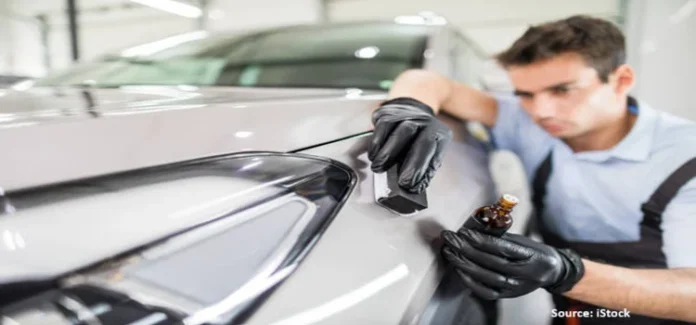Table of Contents
Introduction
The automotive sector is evolving and nanotechnology is one of the primary factor in driving innovation and efficiency. This technology can transform the industry for eco conscious consumers and regulators. By integrating nanotechnology into their manufacturing processes, automobile companies can place themselves in the lead, with high-performance cars that not only satisfy but surpass customer expectations. With the trend towards a more sustainable and green future, applications of nanotechnology in the automotive industry are ready to become the turning points in determining the direction of the industry.
Fuel Efficiency and Engine Performance
Among the most significant advantages of nanotechnology in vehicles is that it can make them more fuel efficient. Nanomaterials like nano lubricants and light nanocomposites decrease engine friction thus leading to lower energy losses and performance improvement. Nano-engineered fuel additives also enhance combustion efficiency, lowering emissions and consumption.
Nanoparticles in lubricants form ultra-low friction surfaces that reduce wear and tear on engine moving parts. This increases the life of the engine when maintenance is minimized. Nanotechnology also facilitates the production of future biofuels through the improvement of catalytic reactions, which are making fuel more efficient and environmentally friendly to make.
As per the report published by the Indian Automotive Association, Nanofluid enhances the performance of the engine by increasing the engine power by about 1.15% and reducing the fuel consumption by about 1.27% compared to ordinary engine oil.
Advanced Materials for Lightweight Vehicles
Lightening vehicle weight is another key enabler for fuel efficiency. Nanocomposites which embed nanoparticles within conventional material to provide enhanced strength and durability at much reduced weight. Carbon nanotubes and graphene materials are being used to infuse body panels, chassis and interior parts and they provide enhanced fuel efficiency and vehicle performance.
Lightweight nanomaterials also enhance improved acceleration and braking performance. Legacy metal components are now being substituted with nanocomposites that have high strengths while ensuring structural integrity and minimizing vehicle weight. This change not only increases fuel economy but also improves the responsiveness and agility of contemporary vehicles.
Hyundai Motor Group has unveiled six cutting-edge nanomaterial technologies to enhance vehicle performance and sustainability. They range from self-healing polymer coatings to more effective solar cells. Mass production will start in 2025–2026 to take the lead in future mobility.

Improved Safety Features
Nanotechnology is also engaged in car safety in crash strength and resistance. Nano-reinforced polymers and nano-coatings render the impact strength of car bodies more resistant, providing additional protection when a collision occurs. Nanocoating of windshields also provides maximum visibility since it does not permit water to stick on the windshield and reduces the formation of fog, hence improving the driver’s safety in adverse weather conditions.
One of them is the use of nanotechnology in the production of tires. Utilization of nanomaterials in tire compositions is responsible for the achievement of improved grip and traction, leading to more responsive handling and shorter braking distance.
Improved Emission Control
With increasing environment concerns, minimization of emissions from automobiles is now a must for automobile industries. Nanotechnology is at the forefront of using high-performance catalytic converters which can effectively combust pollutants. The nanostructured catalysts provide higher surface area available for chemical reaction, thus effectively converting harmful gas into less hazardous emissions. By using this type of technology, manufacturers are better able to achieve strict environmental laws.
Besides catalytic converters, nanotechnology is improving exhaust filtration systems. Nano-filters trap fine particulate matter, greatly diminishing air pollution. Such innovations are pivotal in transitioning toward cleaner transport and attaining world sustainability standards.
Smart Coatings and Self-Cleaning Surfaces

Nanotechnology coatings offer a number of benefits in car applications. Self-cleaning and hydrophobic coatings repel water and dirt that lowers maintenance needs and resist corrosion while nano ceramic coatings improve paint durability and scratch resistance.
Self-healing paint is a new nanotechnology innovation in the car world. The paint consists of nanoparticles that can heal scratches by rearranging their molecular structure. The technology reduces repair expenses and keeps cars’ appearances for longer.
Apart from this, in September 2024, Turkish company Nasiol is taking its global reach to more than 145 nations. Its products, including nano-coating, are coated onto different surfaces including vehicles, glass, ceramics, metal, stone, textile, wood, fabric, and leather.
New Battery Technology for Electric Cars
With the electric vehicle (EV) at the forefront of the future of the automobile industry, nanotechnology has been driving improvements in batteries. Lithium-ion batteries are now being upgraded by adding nanomaterials such as silicon nanoparticle and graphene, which pack more energy density and charge much quicker.
Nanotechnology enables the fabrication of higher-energy density, safer solid-state batteries Nano-structured electrolytes used in them prevent overheating and explosion risk, one of the most important challenges with EVs. Super-capacitors that are also enhanced by nanoparticles are being constructed for faster charging, pushing the transition to electric mobility even more aggressively.
Future Prospects
The use of nanotechnology in the automobile industry will expand with the evolution of electric and autonomous vehicles. Nanomaterials are used to produce advanced batteries with enhanced charging speed and longer battery life. Nano-sensors are also improving vehicle automation through increased real-time monitoring and predictive maintenance.
Nanorobotics development is also gaining momentum, and it can make car maintenance history. Nanorobots of nanoscale would be able to fix micro-level damages on engine components or detect wear and tear before leading to massive breakdowns, ultimately extending the life of vehicles.
Challenges and Limitations
While having many benefits, the large-scale use of nanotechnology in the automobile sector has some drawbacks. The high price tag for research and incorporation of nanomaterials is still a stumbling block for most companies. Furthermore, environmental concerns in production and disposal of nanomaterials have to be addressed by implementing eco-friendly practices.
Regulatory endorsement is another imperative, since long-term implications of some nanomaterials for human health and the environment remain under research. Safe and responsible development will be the top priority to enable the continued advancement of nanotechnology applications in the automobile sector.
Conclusion
Nanotechnology is revolutionizing the car industry with improved fuel efficiency, safety, and sustainability. A few of the key breakthroughs are brought about by nanomaterials, coatings, batteries, and sensors. Future research will continue to advance breakthroughs that make driving cars more enjoyable and better performing, giving manufacturers using nanotechnology a competitive advantage.
Author Bio:

Supratim Bhowmick is a passionate and highly enthusiastic researcher with over two and a half years of experience. He is dedicated to assisting clients in overcoming challenging business obstacles by providing actionable insights through exhaustive research. Supratim has a keen interest in writing articles and blogs, along with content writing. He consistently endeavors to deliver valuable perspectives in these areas. The author can be reached at info@nextmsc.com
Apart from that if you want to know about “The Australian Technology And Automotive Sector” then please visit our Technology Category.



























